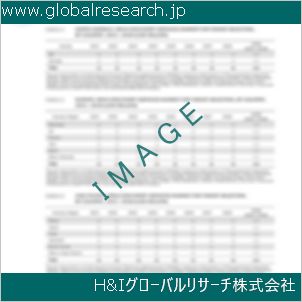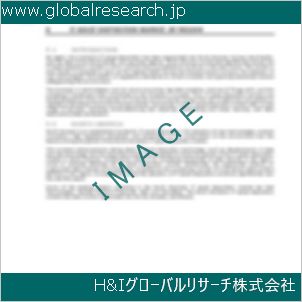1. Preface
1.1. Market Definition and Scope
1.2. Market Segmentation
1.3. Key Research Objectives
1.4. Research Highlights
2. Assumptions and Research Methodology
3. Executive Summary: Global Respiratory Devices Market
4. Market Overview
4.1. Introduction
4.1.1. Product Definition
4.1.2. Industry Evolution / Developments
4.2. Overview
4.3. Market Dynamics
4.3.1. Drivers
4.3.2. Restraints
4.3.3. Opportunities
4.4. Global Respiratory Devices Market Analysis and Forecast, 2017-2031
5. Key Insights
5.1. Pipeline Analysis
5.2. Key Product/Brand Analysis
5.3. Key Mergers & Acquisitions
5.4. COVID-19 Pandemic Impact on Industry
6. Global Respiratory Devices Market Analysis and Forecast, by Product Type
6.1. Introduction and Definitions
6.2. Key Findings/Developments
6.3. Market Value Forecast, by Product Type, 2017–2031
6.3.1. Therapeutic Devices
6.3.2. Diagnostic & Monitoring Devices
6.4. Market Attractiveness, by Product Type
7. Global Respiratory Devices Market Analysis and Forecast, by Therapeutic Devices
7.1. Introduction and Definitions
7.2. Key Findings/Developments
7.3. Market Value Forecast, by Therapeutic Devices, 2017–2031
7.3.1. Drug Delivery Devices
7.3.1.1. Nebulizers
7.3.1.2. Inhalers
7.3.2. Mechanical Ventilators
7.3.2.1. Invasive
7.3.2.2. Non-invasive
7.3.3. Continuous Positive Airway Pressure
7.3.3.1. Devices
7.3.3.2. Disposables
7.3.4. Resuscitators
7.3.4.1. Reusable
7.3.4.2. Disposables
7.3.5. Humidifiers
7.3.6. Airway Clearance Devices
7.3.7. Oxygen Concentrators
7.3.8. Consumables & Disposables
7.3.9. Others
7.3.10. 7.4 Market Attractiveness, by Therapeutic Devices
8. Global Respiratory Devices Market Analysis and Forecast, by Diagnostic & Monitoring Devices
8.1. Introduction and Definitions
8.2. Key Findings/Developments
8.3. Market Value Forecast, by Diagnostic & Monitoring Devices, 2017–2031
8.3.1. Pulse Oximeters
8.3.2. Capnographs
8.3.3. Spirometers
8.3.4. Polysomnographs
8.3.5. Peak Flow Meters
8.3.6. Gas Analyzers
8.3.7. Others
8.4. Market Attractiveness, by Diagnostic & Monitoring Devices
9. Global Respiratory Devices Market Analysis and Forecast, by Application
9.1. Introduction and Definitions
9.2. Key Findings/Developments
9.3. Market Value Forecast, by Application, 2017–2031
9.3.1. Chronic Obstructive Pulmonary Disease
9.3.2. Asthma
9.3.3. Obstructive Sleep Apnea
9.3.4. Respiratory Distress Syndrome
9.3.5. Cystic Fibrosis
9.3.6. Pneumonia
9.4. Market Attractiveness, by Application
10. Global Respiratory Devices Market Analysis and Forecast, by Region
10.1. Key Findings
10.2. Market Value Forecast, by Region, 2017–2031
10.2.1. North America
10.2.2. Europe
10.2.3. Asia Pacific
10.2.4. Latin America
10.2.5. Middle East & Africa
10.3. Market Attractiveness, by Region
11. North America Respiratory Devices Market Analysis and Forecast
11.1. Introduction
11.1.1. Key Findings
11.2. Market Value Forecast, by Product Type, 2017–2031
11.2.1. Therapeutic Devices
11.2.2. Diagnostic & Monitoring Devices
11.3. Market Attractiveness, by Product Type
11.4. Market Value Forecast, by Therapeutic Devices, 2017–2031
11.4.1. Drug Delivery Devices
11.4.1.1. Nebulizers
11.4.1.2. Inhalers
11.4.2. Mechanical Ventilators
11.4.2.1. Invasive
11.4.2.2. Non-invasive
11.4.3. Continuous Positive Airway Pressure
11.4.3.1. Devices
11.4.3.2. Disposables
11.4.4. Resuscitators
11.4.4.1. Reusable
11.4.4.2. Disposables
11.4.5. Humidifiers
11.4.6. Airway Clearance Devices
11.4.7. Oxygen Concentrators
11.4.8. Consumables & Disposables
11.4.9. Others
11.5. Market Attractiveness, by Therapeutic Devices
11.6. Market Value Forecast, by Diagnostic & Monitoring Devices, 2017–2031
11.6.1. Pulse Oximeters
11.6.2. Capnographs
11.6.3. Spirometers
11.6.4. Polysomnographs
11.6.5. Peak Flow Meters
11.6.6. Gas Analyzers
11.6.7. Others
11.7. Market Attractiveness, by Diagnostic & Monitoring Devices
11.8. Market Value Forecast, by Application, 2017–2031
11.8.1. Chronic Obstructive Pulmonary Disease
11.8.2. Asthma
11.8.3. Obstructive Sleep Apnea
11.8.4. Respiratory Distress Syndrome
11.8.5. Cystic Fibrosis
11.8.6. Pneumonia
11.9. Market Attractiveness, by Application
11.10. Market Value Forecast, by Country/Sub-region, 2017–2031
11.10.1. U.S.
11.10.2. Canada
11.11. Market Attractiveness Analysis
11.11.1. By Product Type
11.11.2. By Therapeutic Devices
11.11.3. By Diagnostic & Monitoring Devices
11.11.4. By Application
11.11.5. By Country
12. Europe Respiratory Devices Market Analysis and Forecast
12.1. Introduction
12.1.1. Key Findings
12.2. Market Value Forecast, by Product Type, 2017–2031
12.2.1. Therapeutic Devices
12.2.2. Diagnostic & Monitoring Devices
12.3. Market Attractiveness, by Product Type
12.4. Market Value Forecast, by Therapeutic Devices, 2017–2031
12.4.1. Drug Delivery Devices
12.4.1.1. Nebulizers
12.4.1.2. Inhalers
12.4.2. Mechanical Ventilators
12.4.2.1. Invasive
12.4.2.2. Non-invasive
12.4.3. Continuous Positive Airway Pressure
12.4.3.1. Devices
12.4.3.2. Disposables
12.4.4. Resuscitators
12.4.4.1. Reusable
12.4.4.2. Disposables
12.4.5. Humidifiers
12.4.6. Airway Clearance Devices
12.4.7. Oxygen Concentrators
12.4.8. Consumables & Disposables
12.4.9. Others
12.5. Market Attractiveness, by Therapeutic Devices
12.6. Market Value Forecast, by Diagnostic & Monitoring Devices, 2017–2031
12.6.1. Pulse Oximeters
12.6.2. Capnographs
12.6.3. Spirometers
12.6.4. Polysomnographs
12.6.5. Peak Flow Meters
12.6.6. Gas Analyzers
12.6.7. Others
12.7. Market Attractiveness, by Diagnostic & Monitoring Devices
12.8. Market Value Forecast, by Application, 2017–2031
12.8.1. Chronic Obstructive Pulmonary Disease
12.8.2. Asthma
12.8.3. Obstructive Sleep Apnea
12.8.4. Respiratory Distress Syndrome
12.8.5. Cystic Fibrosis
12.8.6. Pneumonia
12.9. Market Attractiveness, by Application
12.10. Market Value Forecast, by Country/Sub-region, 2017–2031
12.10.1. Germany
12.10.2. U.K.
12.10.3. France
12.10.4. Italy
12.10.5. Spain
12.10.6. Rest of Europe
12.11. Market Attractiveness Analysis
12.11.1. By Product Type
12.11.2. By Therapeutic Devices
12.11.3. By Diagnostic & Monitoring Devices
12.11.4. By Application
12.11.5. By Country/Sub-region
13. Asia Pacific Respiratory Devices Market Analysis and Forecast
13.1. Introduction
13.1.1. Key Findings
13.2. Market Value Forecast, by Product Type, 2017–2031
13.2.1. Therapeutic Devices
13.2.2. Diagnostic & Monitoring Devices
13.3. Market Attractiveness, by Product Type
13.4. Market Value Forecast, by Therapeutic Devices, 2017–2031
13.4.1. Drug Delivery Devices
13.4.1.1. Nebulizers
13.4.1.2. Inhalers
13.4.2. Mechanical Ventilators
13.4.2.1. Invasive
13.4.2.2. Non-invasive
13.4.3. Continuous Positive Airway Pressure
13.4.3.1. Devices
13.4.3.2. Disposables
13.4.4. Resuscitators
13.4.4.1. Reusable
13.4.4.2. Disposables
13.4.5. Humidifiers
13.4.6. Airway Clearance Devices
13.4.7. Oxygen Concentrators
13.4.8. Consumables & Disposables
13.4.9. Others
13.5. Market Attractiveness, by Therapeutic Devices
13.6. Market Value Forecast, by Diagnostic & Monitoring Devices, 2017–2031
13.6.1. Pulse Oximeters
13.6.2. Capnographs
13.6.3. Spirometers
13.6.4. Polysomnographs
13.6.5. Peak Flow Meters
13.6.6. Gas Analyzers
13.6.7. Others
13.7. Market Attractiveness, by Diagnostic & Monitoring Devices
13.8. Market Value Forecast, by Application, 2017–2031
13.8.1. Chronic Obstructive Pulmonary Disease
13.8.2. Asthma
13.8.3. Obstructive Sleep Apnea
13.8.4. Respiratory Distress Syndrome
13.8.5. Cystic Fibrosis
13.8.6. Pneumonia
13.9. Market Attractiveness, by Application
13.10. Market Value Forecast, by Country/Sub-region, 2017–2031
13.10.1. China
13.10.2. Japan
13.10.3. India
13.10.4. Australia & New Zealand
13.10.5. Rest of Asia Pacific
13.11. Market Attractiveness Analysis
13.11.1. By Product Type
13.11.2. By Therapeutic Devices
13.11.3. By Diagnostic & Monitoring Devices
13.11.4. By Application
13.11.5. By Country/Sub-region
14. Latin America Respiratory Devices Market Analysis and Forecast
14.1. Introduction
14.1.1. Key Findings
14.2. Market Value Forecast, by Product Type, 2017–2031
14.2.1. Therapeutic Devices
14.2.2. Diagnostic & Monitoring Devices
14.3. Market Attractiveness, by Product Type
14.4. Market Value Forecast, by Therapeutic Devices, 2017–2031
14.4.1. Drug Delivery Devices
14.4.1.1. Nebulizers
14.4.1.2. Inhalers
14.4.2. Mechanical Ventilators
14.4.2.1. Invasive
14.4.2.2. Non-invasive
14.4.3. Continuous Positive Airway Pressure
14.4.3.1. Devices
14.4.3.2. Disposables
14.4.4. Resuscitators
14.4.4.1. Reusable
14.4.4.2. Disposables
14.4.5. Humidifiers
14.4.6. Airway Clearance Devices
14.4.7. Oxygen Concentrators
14.4.8. Consumables & Disposables
14.4.9. Others
14.5. Market Attractiveness, by Therapeutic Devices
14.6. Market Value Forecast, by Diagnostic & Monitoring Devices, 2017–2031
14.6.1. Pulse Oximeters
14.6.2. Capnographs
14.6.3. Spirometers
14.6.4. Polysomnographs
14.6.5. Peak Flow Meters
14.6.6. Gas Analyzers
14.6.7. Others
14.7. Market Attractiveness, by Diagnostic & Monitoring Devices
14.8. Market Value Forecast, by Application, 2017–2031
14.8.1. Chronic Obstructive Pulmonary Disease
14.8.2. Asthma
14.8.3. Obstructive Sleep Apnea
14.8.4. Respiratory Distress Syndrome
14.8.5. Cystic Fibrosis
14.8.6. Pneumonia
14.9. Market Attractiveness, by Application
14.10. Market Value Forecast, by Country/Sub-region, 2017–2031
14.10.1. Brazil
14.10.2. Mexico
14.10.3. Rest of Latin America
14.11. Market Attractiveness Analysis
14.11.1. By Product Type
14.11.2. By Therapeutic Devices
14.11.3. By Diagnostic & Monitoring Devices
14.11.4. By Application
14.11.5. By Country/Sub-region
15. Middle East & Africa Respiratory Devices Market Analysis and Forecast
15.1. Introduction
15.1.1. Key Findings
15.2. Market Value Forecast, by Product Type, 2017–2031
15.2.1. Therapeutic Devices
15.2.2. Diagnostic & Monitoring Devices
15.3. Market Attractiveness, by Product Type
15.4. Market Value Forecast, by Therapeutic Devices, 2017–2031
15.4.1. Drug Delivery Devices
15.4.1.1. Nebulizers
15.4.1.2. Inhalers
15.4.2. Mechanical Ventilators
15.4.2.1. Invasive
15.4.2.2. Non-invasive
15.4.3. Continuous Positive Airway Pressure
15.4.3.1. Devices
15.4.3.2. Disposables
15.4.4. Resuscitators
15.4.4.1. Reusable
15.4.4.2. Disposables
15.4.5. Humidifiers
15.4.6. Airway Clearance Devices
15.4.7. Oxygen Concentrators
15.4.8. Consumables & Disposables
15.4.9. Others
15.5. Market Attractiveness, by Therapeutic Devices
15.6. Market Value Forecast, by Diagnostic & Monitoring Devices, 2017–2031
15.6.1. Pulse Oximeters
15.6.2. Capnographs
15.6.3. Spirometers
15.6.4. Polysomnographs
15.6.5. Peak Flow Meters
15.6.6. Gas Analyzers
15.6.7. Others
15.7. Market Attractiveness, by Diagnostic & Monitoring Devices
15.8. Market Value Forecast, by Application, 2017–2031
15.8.1. Chronic Obstructive Pulmonary Disease
15.8.2. Asthma
15.8.3. Obstructive Sleep Apnea
15.8.4. Respiratory Distress Syndrome
15.8.5. Cystic Fibrosis
15.8.6. Pneumonia
15.9. Market Attractiveness, by Application
15.10. Market Value Forecast, by Country/Sub-region, 2017–2031
15.10.1. GCC Countries
15.10.2. South Africa
15.10.3. Rest of Middle East & Africa
15.11. Market Attractiveness Analysis
15.11.1. By Product Type
15.11.2. By Therapeutic Devices
15.11.3. By Diagnostic & Monitoring Devices
15.11.4. By Application
15.11.5. By Country/Sub-region
16. Competition Landscape
16.1. Market Player – Competition Matrix (By Tier and Size of Companies)
16.2. Market Share Analysis, by Company (2022)
16.3. Company Profiles
16.3.1. ResMed
16.3.1.1. Company Overview (HQ, Business Segments, Employee Strength)
16.3.1.2. Product Portfolio
16.3.1.3. Financial Overview
16.3.1.4. SWOT Analysis
16.3.1.5. Strategic Overview
16.3.2. Koninklijke Philips N.V.
16.3.2.1. Company Overview (HQ, Business Segments, Employee Strength)
16.3.2.2. Product Portfolio
16.3.2.3. Financial Overview
16.3.2.4. SWOT Analysis
16.3.2.5. Strategic Overview
16.3.3. Vyaire Medical
16.3.3.1. Company Overview (HQ, Business Segments, Employee Strength)
16.3.3.2. Product Portfolio
16.3.3.3. Financial Overview
16.3.3.4. SWOT Analysis
16.3.3.5. Strategic Overview
16.3.4. Smiths Medical
16.3.4.1. Company Overview (HQ, Business Segments, Employee Strength)
16.3.4.2. Product Portfolio
16.3.4.3. Financial Overview
16.3.4.4. SWOT Analysis
16.3.4.5. Strategic Overview
16.3.5. Fisher & Paykel Healthcare Limited
16.3.5.1. Company Overview (HQ, Business Segments, Employee Strength)
16.3.5.2. Product Portfolio
16.3.5.3. Financial Overview
16.3.5.4. SWOT Analysis
16.3.5.5. Strategic Overview
16.3.6. Drägerwerk AG & Co.
16.3.6.1. Company Overview (HQ, Business Segments, Employee Strength)
16.3.6.2. Product Portfolio
16.3.6.3. Financial Overview
16.3.6.4. SWOT Analysis
16.3.6.5. Strategic Overview
16.3.7. GE Healthcare
16.3.7.1. Company Overview (HQ, Business Segments, Employee Strength)
16.3.7.2. Product Portfolio
16.3.7.3. Financial Overview
16.3.7.4. SWOT Analysis
16.3.7.5. Strategic Overview
16.3.8. Getinge AB
16.3.8.1. Company Overview (HQ, Business Segments, Employee Strength)
16.3.8.2. Product Portfolio
16.3.8.3. Financial Overview
16.3.8.4. SWOT Analysis
16.3.8.5. Strategic Overview
16.3.9. Medtronic plc
16.3.9.1. Company Overview (HQ, Business Segments, Employee Strength)
16.3.9.2. Product Portfolio
16.3.9.3. Financial Overview
16.3.9.4. SWOT Analysis
16.3.9.5. Strategic Overview
16.3.10. Chart Industries
16.3.10.1. Company Overview (HQ, Business Segments, Employee Strength)
16.3.10.2. Product Portfolio
16.3.10.3. Financial Overview
16.3.10.4. SWOT Analysis
16.3.10.5. Strategic Overview
❖ 免責事項 ❖
http://www.globalresearch.jp/disclaimer












